Manufacturers use jetting to improve the appearance and performance of their materials, construct new objects, or to demolish. The two main types of jetting used are water jetting and laser jetting. Certain factors make one method preferable over the other. Choosing one over the other involves looking at materials used, thickness, tolerance, and edge finish needed, and the part’s sensitivity to heat. Have a look at our industry-leading Robo SawJet, which is our programmable Saw and Abrasive WaterJet cutting system.
What is Waterjet Cutting?
Waterjet cutting is an engineering method for cutting objects. It uses a high-density, high-speed jet of ultra high-pressure water to do the cutting. Its total amount of pressure can be a maximum of 392 MPa, or about 4,000 atmospheres and it’s projected from a nozzle measuring 0.1 mm in diameter. This creates water that can exceed the speed of sound by three times and has a destructive force.
This type of cutting is used for cutting dashboards and roof materials. It is also a method of cutting and demolishing concrete structures or to cut aircraft fuselages. Because it uses a water current, there is no effect from heat. This method makes it possible to cut shapes in 2D or 3D. Also, it is environmentally friendly. No dust is created that may be breathed in by workers.
What is Laser Cutting?
Laser cutting can be used in industrial manufacturing and it is also used in artistic methods like etching. A high-power laser, controlled by a computer and optics, beams the laser at the material being worked on. During the process, a motion control system is used.
It reaches a very narrow point of .10 mm and normally it is .32 mm in diameter. This varies depending on the material thickness. All types of lasers are used in welding. There are multiple kinds of lasers. The three basic types are an O2 laser, used for boring, cutting, and engraving, neodymium (Nd), and neodymium yttrium-aluminium-garnet (Nd:YAG). These have the same style with different uses. Nd is used for low repetition and high energy boring and Nd:YAG is used for very high-power boring and engraving.
Which Technique Should You Use for Your Application?
The category you use depends on the materials that you are working with. Waterjetting is the safer method for cutting, is quieter, and does not produce dust by-products. It also does not produce any heat which is important when working with materials like metal.
Overall, the two methods can be used in many of the same circumstances. Laser cutting can be more precise, so for small details, it might be preferable. Waterjet cutting can profile any material up to 250 mm, while lasers are limited to 25 mm.
Summary
Watercut Jetting and laser jetting are used in many of the same ways to achieve engineering goals. Waterjet methods are most common in applications like automobile manufacturing and construction. It is preferable because it does not produce as much heat as laser cutting. This helps preserve the materials used. Abrasives can be mixed in with the water, such as garnet or sand, and this achieves a better-looking finish than if someone were to use just lasers. Also, it is quieter than lasers, and there are less harmful byproducts.
Lasers don’t use up resources i.e. water and they also can have more precise results. This is why they are most popular in artistic etching, because of the fine-tuned control that it has. Lasercutting can also be used in welding. It generates heat and runs on a computer program.
Our expert waterjet cutters help you to complete your project in a timely way with close attention to detail. Contact our team today with any questions and choose BACA Systems for your next project.
